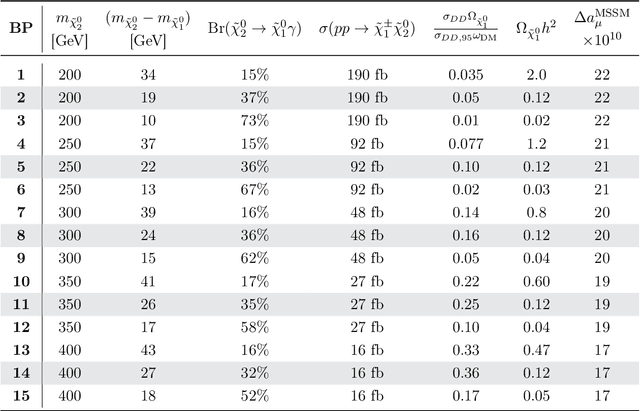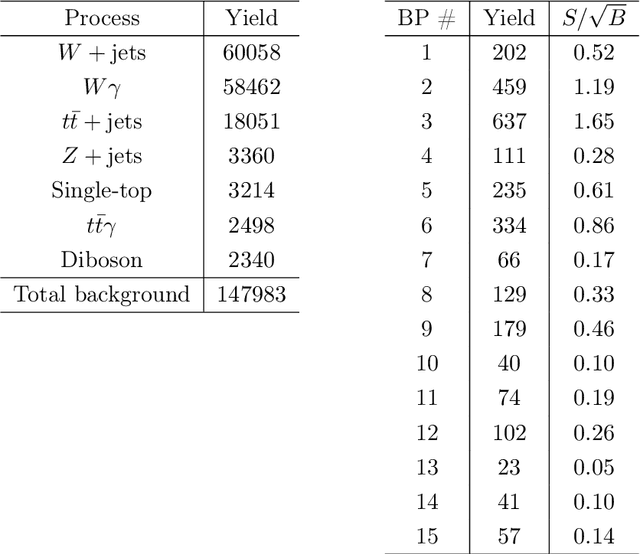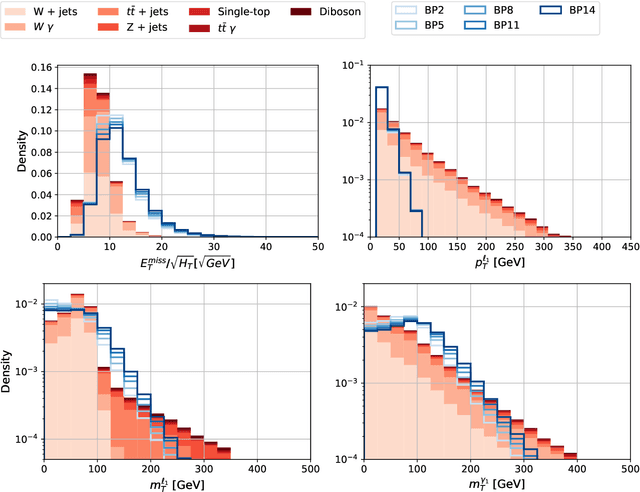Rosa M. Sandá Seoane
Machine-Learning Analysis of Radiative Decays to Dark Matter at the LHC
Oct 17, 2024



Abstract:The search for weakly interacting matter particles (WIMPs) is one of the main objectives of the High Luminosity Large Hadron Collider (HL-LHC). In this work we use Machine Learning (ML) techniques to explore WIMP radiative decays into a Dark Matter (DM) candidate in a supersymmetric framework. The minimal supersymmetric WIMP sector includes the lightest neutralino that can provide the observed DM relic density through its co-annihilation with the second lightest neutralino and lightest chargino. Moreover, the direct DM detection cross section rates fulfill current experimental bounds and provide discovery targets for the same region of model parameters in which the radiative decay of the second lightest neutralino into a photon and the lightest neutralino is enhanced. This strongly motivates the search for radiatively decaying neutralinos which, however, suffers from strong backgrounds. We investigate the LHC reach in the search for these radiatively decaying particles by means of cut-based and ML methods and estimate its discovery potential in this well-motivated, new physics scenario.
 Add to Chrome
Add to Chrome Add to Firefox
Add to Firefox Add to Edge
Add to Edge